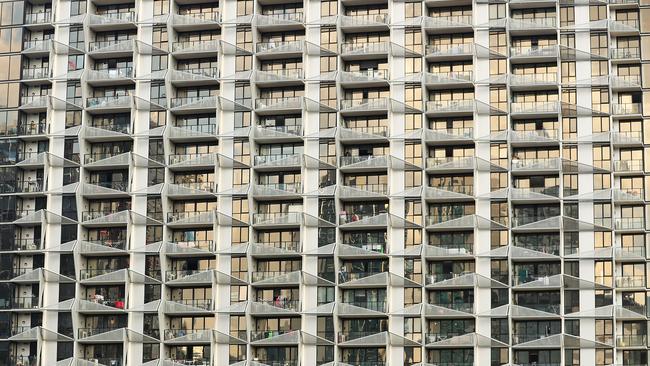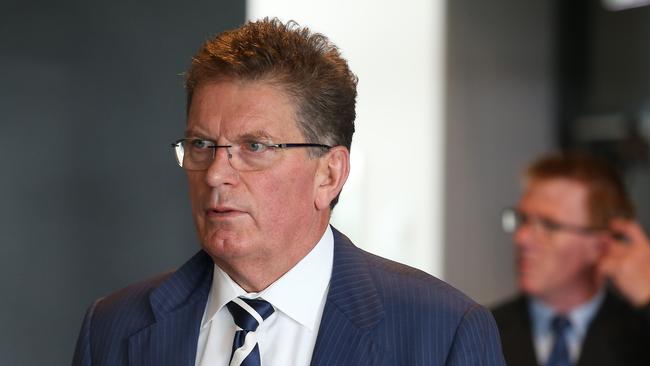Time we looked under the cladding
It’s a safe bet that if some builders have cut corners on cladding, they’ll have cut corners elsewhere as well, writes Matt Johnston.
Buying or renting a home is stressful.
Once you sign on that dotted line and move in, even with due diligence, you have to trust that your new place is safe and will stay standing against the elements.
The combustible cladding crisis that erupted in Victoria — and which is part of a worldwide problem — has shaken that trust.
In fact, if you’re buying a recently-built apartment in Victoria, I would look pretty carefully at Section 32 documents to check for any cladding-specific clauses.
A statewide audit found that hundreds of properties dotted around Victoria were recently found to have “high” or “extreme” fire danger risks due to dangerous and combustible cladding — often made from aluminium sheets with a Polyethylene core.

Some of those properties are on the market while others are likely to come on to the market at some stage.
It has slowly dawned on the Andrews Government that the cladding crisis was not only dangerous to homeowners and renters, it was also politically combustible.
Last month Premier Daniel Andrews stepped in with a $600 million fund for the removal of dangerous material on higher-risk buildings.
When the package was announced property owners were relieved. Up to that point, many owners’ corporations had been trying to get shonky builders to fix the problems, but many of them had already disappeared.
The stress of living in a potential fire-risk must have been immense. Imagine if, as the Herald Sun reveals today, security guards prowled your property 24-hours a day, on the off chance that someone had dropped a cigarette?
The rectification program is bound to take some time to be set up, and then to be finalised, meaning the anxiety won’t disappear overnight.
But at least there’s a commitment to tackling the problem.

The question still without an answer, however, is how did it come to this? How did thousands of buildings have cheap and nasty products tacked on to them and no one noticed or cared?
The negligence of builders who should be culpable is extreme and the failure of the regulatory regime is a disgrace.
In documents released recently by Monash Council under Freedom of Information, disturbing evidence of the lies being peddled by shonks to get around stringent fire-mitigation standards are exposed.
No one seemed to check whether what those people said was installed actually was installed.
Have these builders been chucked out of the industry? Who would know?
Approved drawings, the council says, listed a type of material that was ticked off for use, before a substandard combustible polystyrene panel system was thrown up instead.
There are no doubt hundreds of similar examples of that, as rogue operators skirted guidelines and avoided checks and balances to maximise profits.
What some people familiar with the industry now fear is that the cladding issue might be the tip of a very large iceberg.
While the risk to life associated with combustible material rightly attracts the headlines and urgency of government responses, there are other problems lurking beneath the cladding and within buildings.
Former premier Ted Baillieu, who led the cladding taskforce that investigated this issue in Victoria, said recently at a summit that “we are increasingly aware of other defects which may be seen to be systemic”.

He went on to list issues such as glass, plumbing and wiring as particular problems.
As Baillieu said, it’s hard to know exactly how bad things are around the cladding problem until you take it off and do a “reveal”.
That is a warning that has broader ramifications. Concrete cancer, silicosis and shoddy steel are other problems listed by Baillieu.
Shortcuts and cost-cutting have been rife. With competition fuelling the market, and ever-growing demand for more properties to match our population, that can happen if there are lax standards and oversight.
It’s clearly been happening for years but it can’t go on.
As part of the cladding rectification, someone should sweep a broom through the industry regulator and set up something with teeth.
Opposition planning spokesman Tim Smith wants a parliamentary inquiry into the Victorian Building Authority, which I would have thought was a no-brainer.
This is a test of whether politicians want to shine a light on to what can be murky goings-on in the development sector.
Another point made by Baillieu might sound aesthetic, but is driven by the emergence of shoddy products.
So many buildings that have shot up around Melbourne look “like crap”.
That is obvious to anyone walking around established suburbs, where units are being shoved in holus-bolus, and in new growth areas.
Fresh apartment guidelines have addressed the ugly factor (maybe not in so many words but the intent is there) but until someone takes the reins and rides standards hard I doubt they will be met.
It makes you think, though. If some of the houses that have sprung up look “like crap”, imagine what might be lurking beneath the exterior.
AUDIT FINDS HUNDREDS OF BUILDINGS WITH DANGEROUS CLADDING
VICTORIANS FOOT $600M BILL TO REMOVE COMBUSTIBLE CLADDING
The cladding crisis should force authorities to get serious about what’s being built in Victoria.
Don’t do a quick fix on the outer layer and ignore the rest.
We might not like what we see, but it will be worth it in the long run.
Matt Johnston is state politics editor.
